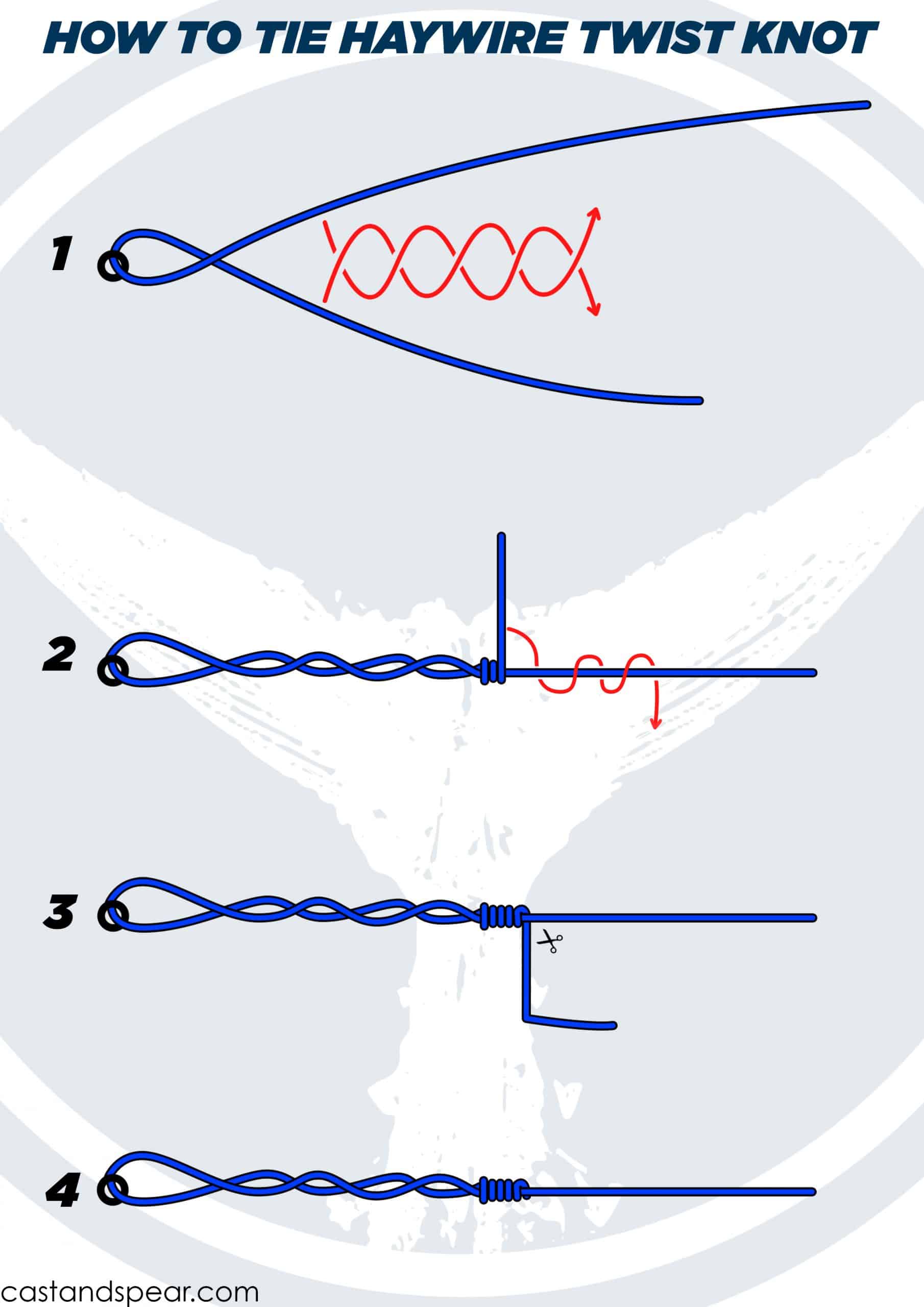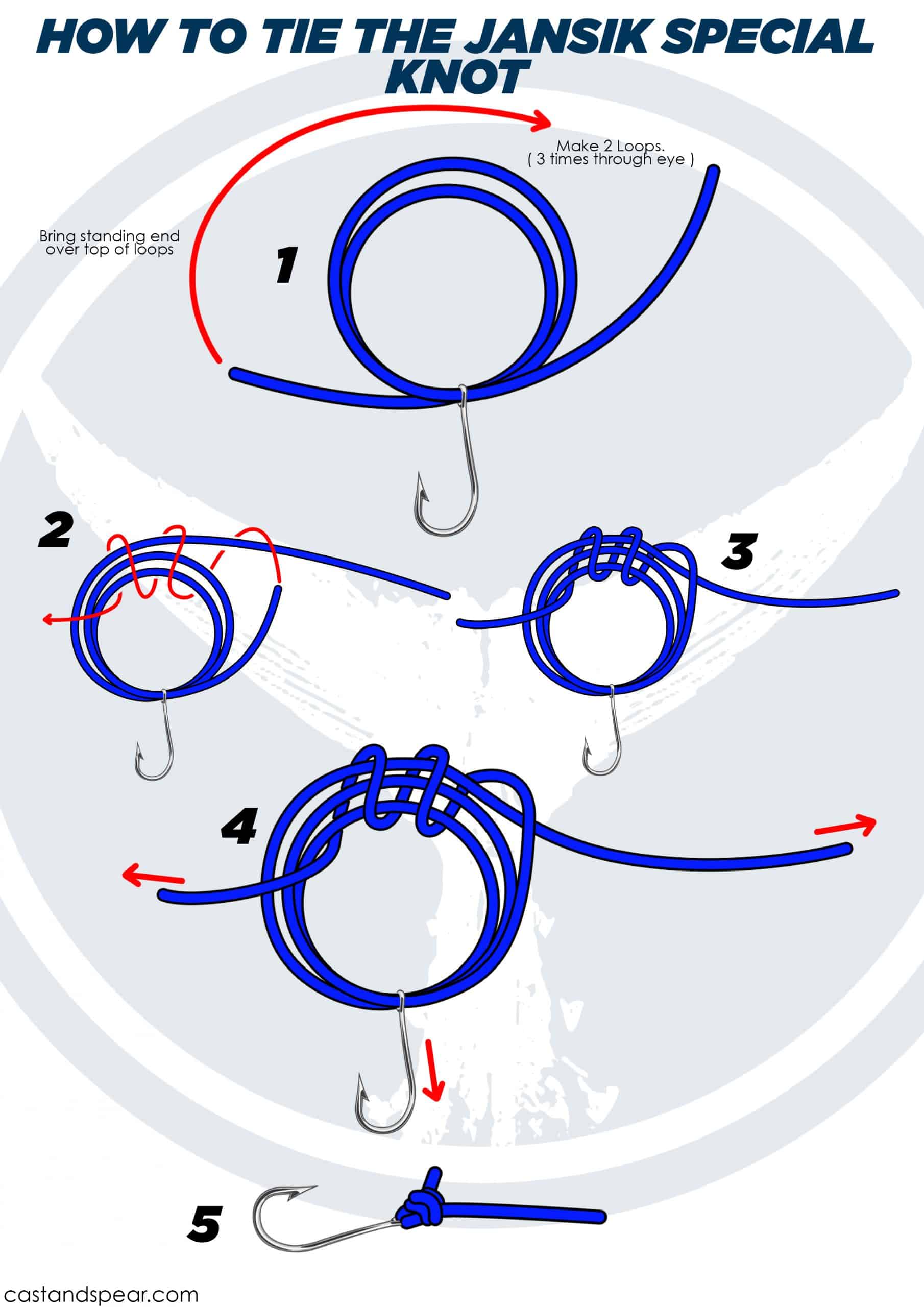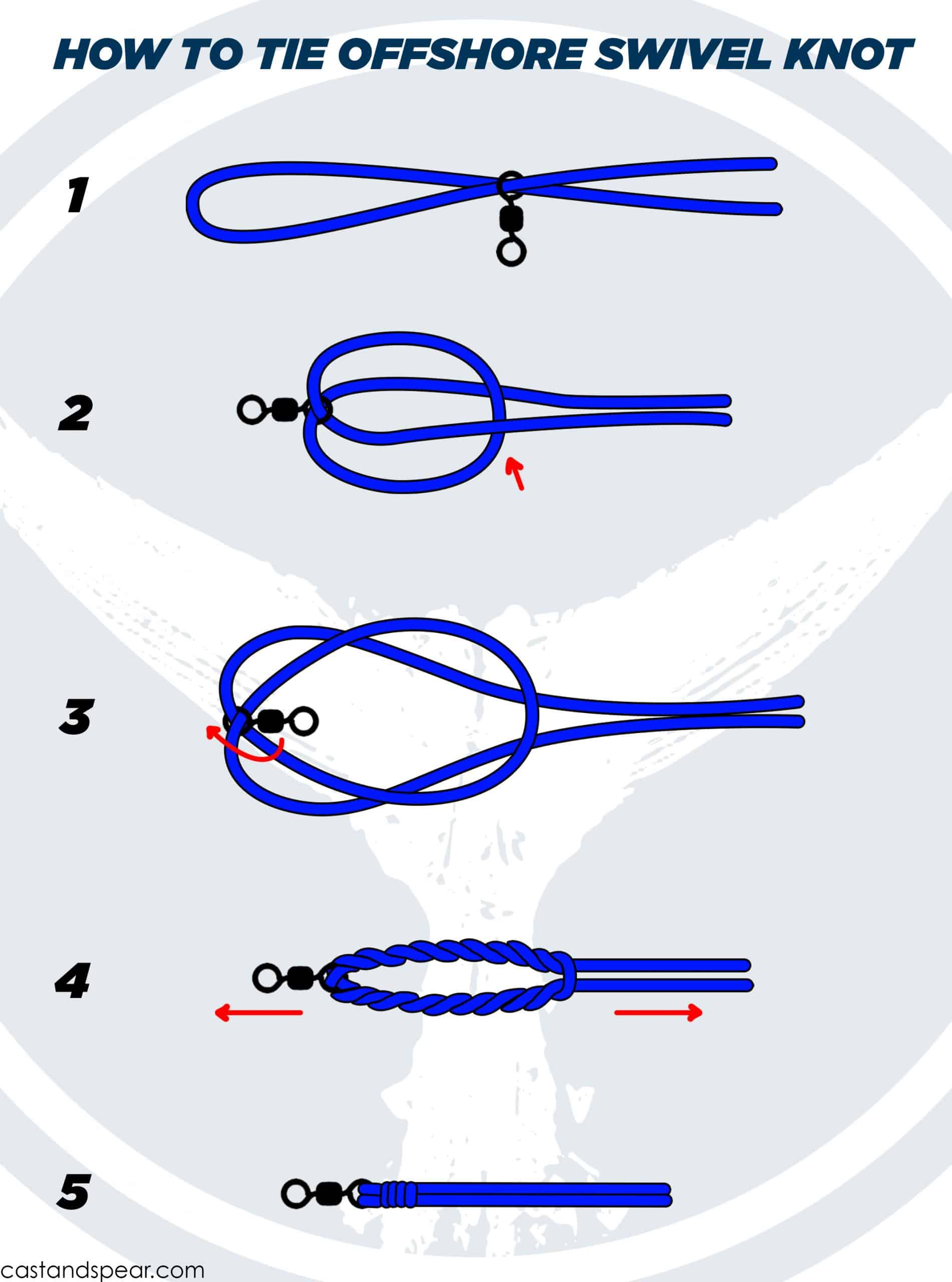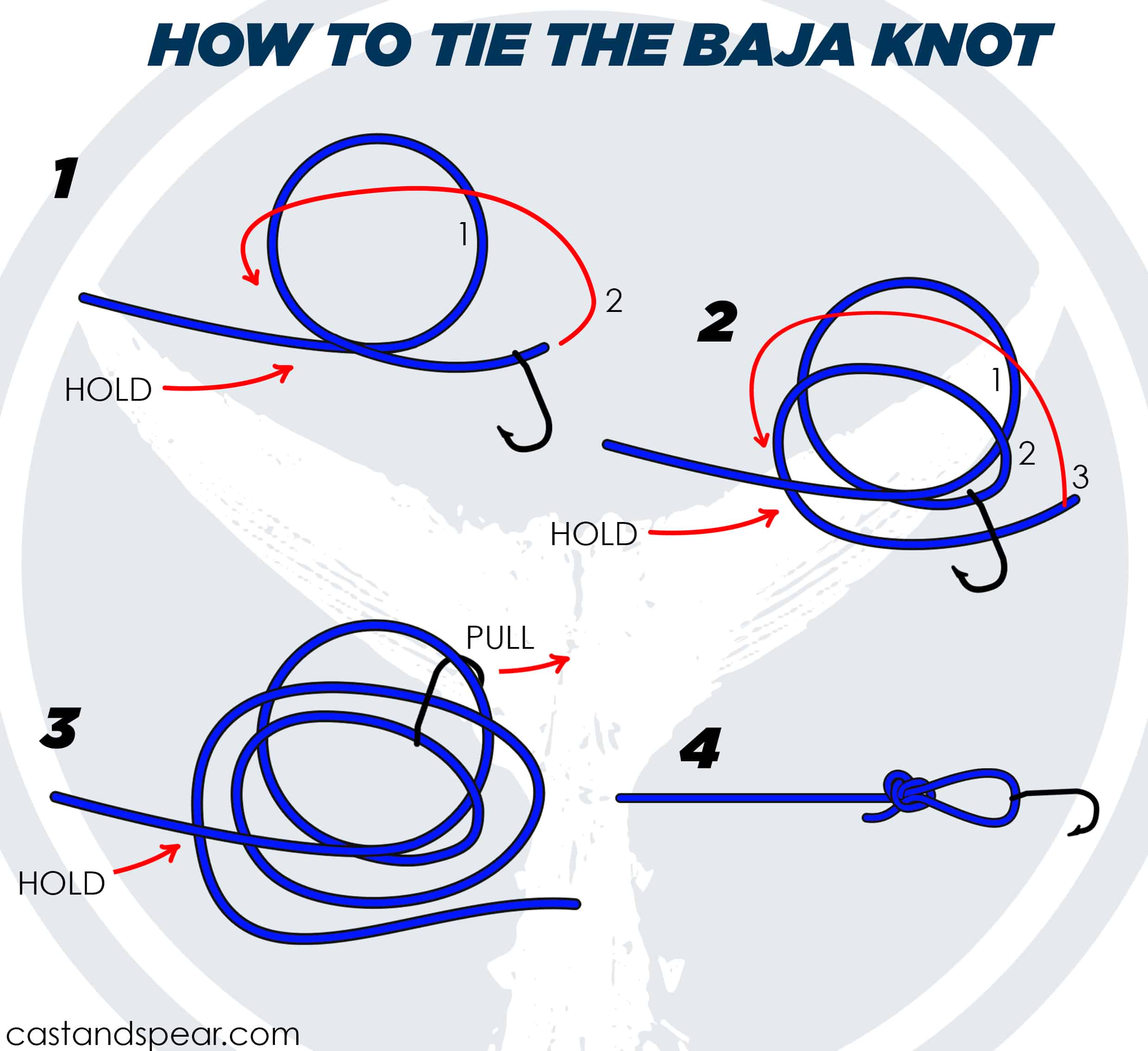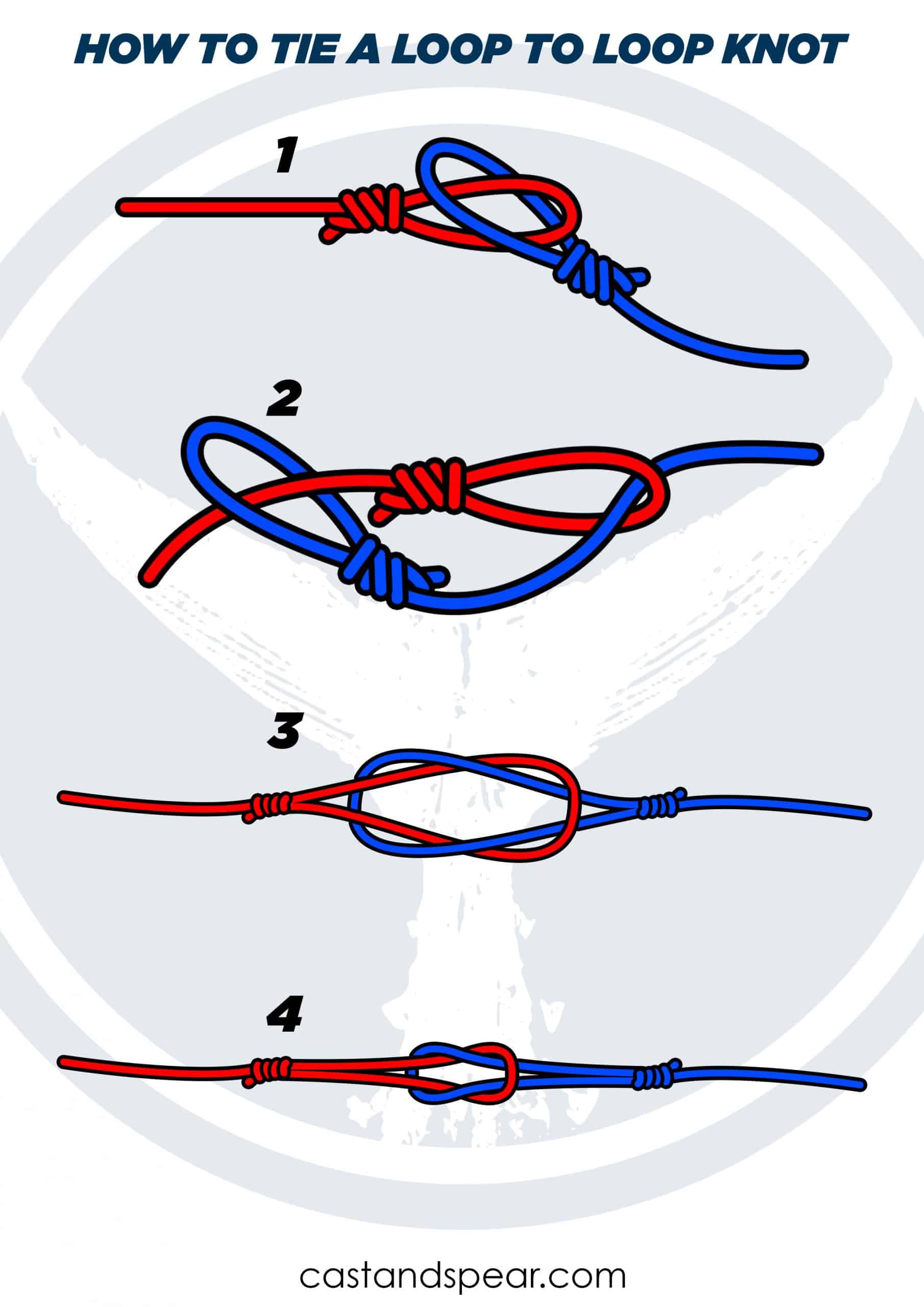Your search for securing a leader to lead core is over. The Willis knot is used by anglers to secure a leader to lead core fishing line, and the number of overhand knots you use to make it depends on the line you have.
For example, use two if you have a braided line leader and use one overhand knot if you have a monofilament leader. What’s fascinating about this fishing knot is that it has a Chinese finger-pull grip and is almost impossible to unravel.
Tying the Willis Knot
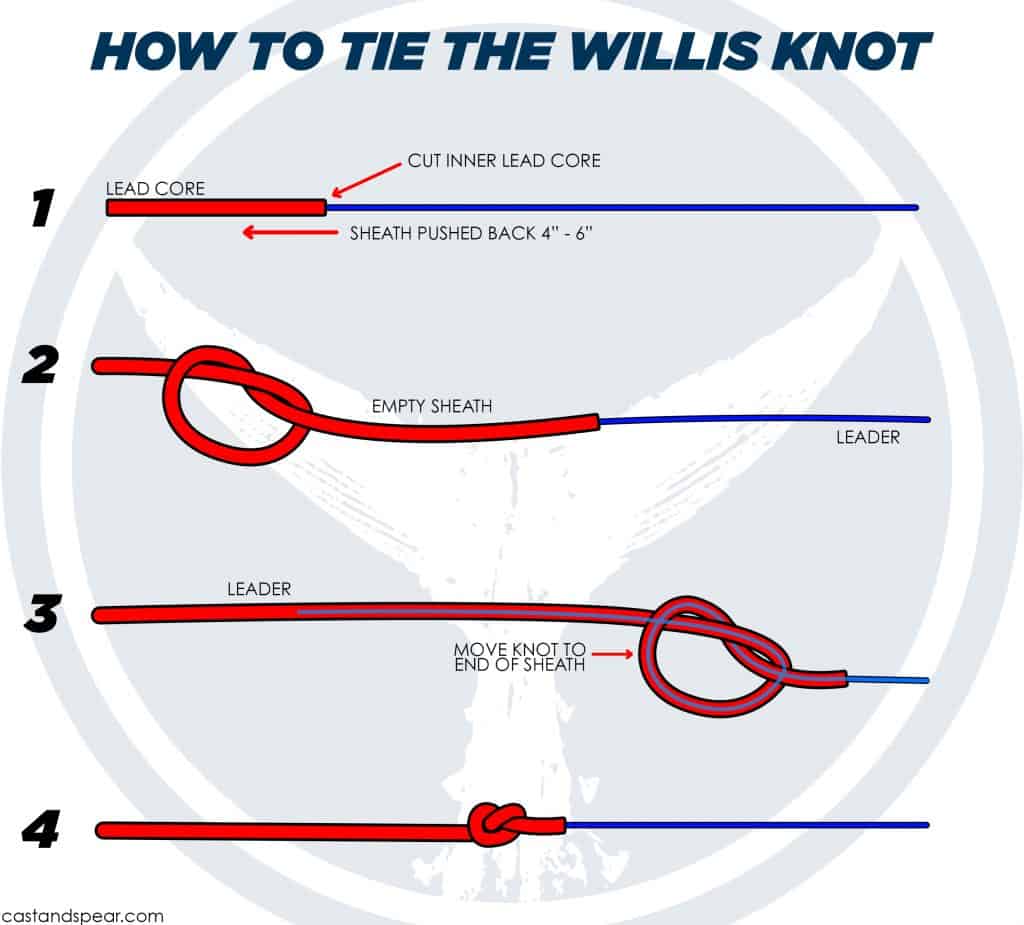
Step 1
Push the sheath off the lead till about 3 or 4 inches are exposed. Cut out the exposed lead and push the sheath forward till you see 3 to 4 inches of the empty sheath.
Step 2
Cut off the end of the mono line and place it in the sheath till it meets the lead.
Step 3
Tie an overhand knot in that part of the sheath where the line is. Then move back the knot to about a quarter from where the line and lead touch in the sheath.
Step 4
Tuck it down and about a quarter of an inch around the contact point.
Step 5
Tie another overhand knot and move it as close to the end of the sheath as possible.
Use a Willis knot diagram to check the results. Whether you are fishing in August or during the winter months, this one won’t let you down.

Willis Knot Tips
- Maintain as much mono and lead contact as possible when you are making one.
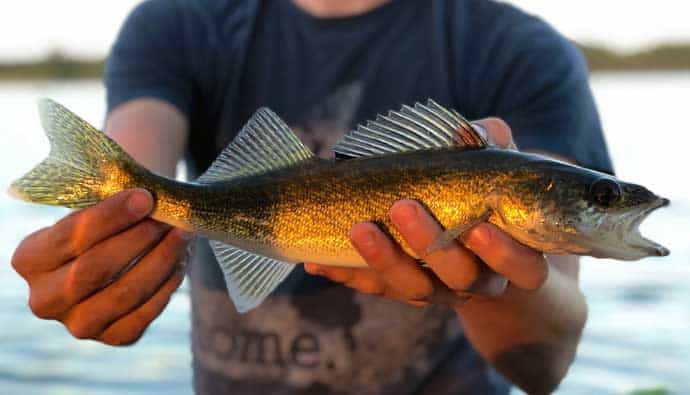
Uses
- Use this knot to secure or slide a leader onto the lead core fishing line.
Advantages and Disadvantages
Feeding the Leader in a Willis knot can be difficult at first, but more comfortable with practice. However, what sets this knot apart is that it is small enough to pass through guides and right into the reel without snagging.
Alternatives
Double Uni knot – The Double Uni knot is made by joining two lines that are of different diameters and made of different materials.
Albright Special knot – The Albright knot is one of the most reliable knots for joining lines that are of unequal diameters or made of vastly different materials.
FAQs
Q: What is unique about the Willis Knot?
A: This knot tightens when pulled, even though it does not look as tight at first glance.
Q: Why does the Willis knot have multiple overhand knots?
A: The overhand knots secure it in place.
Q: What other knot tightens when pulled?
A: The Tautline Hitch.
Q: How do you tie Leader to a Willis knot lead core?
A: Take about 6 inches of the lead out of the end of a lead core. Then, attach a swivel to it using a Clinch knot. Then tie the Leader to the opposite sides of the swivel using a Trilene knot.
Q: How do you knot blood?
A: That is a common misconception about the blood knot. It is not used to ‘tie blood.’ It joins sections of the mono line while maintaining most of its strength, which is the best material for this knot.
Q: What is the lead core fishing line?
A: This is a fishing line that comes with a core that adds extra weight to ensure your lures find their way to the bottom to attract fish in deep water.
Q: How do you tie a double uni knot?
A: Overlap two ends of a fishing line and take the tag end of the one on the left and double it back to make three wraps that cover both lines. Then slip it through the created loop. Repeat the step with the tag end of the left line and make similar wraps there, to get two uni knots. Then pull the standing lines in opposite directions to slide the two together and complete the knot.
Trim off the excess line. Please share this info with other anglers and watch it become a hot topic of conversation. Feel free to search for more ways to tie this knot and the best ways to ensure it remains secure as you fish.




 Facebook
Facebook YouTube
YouTube